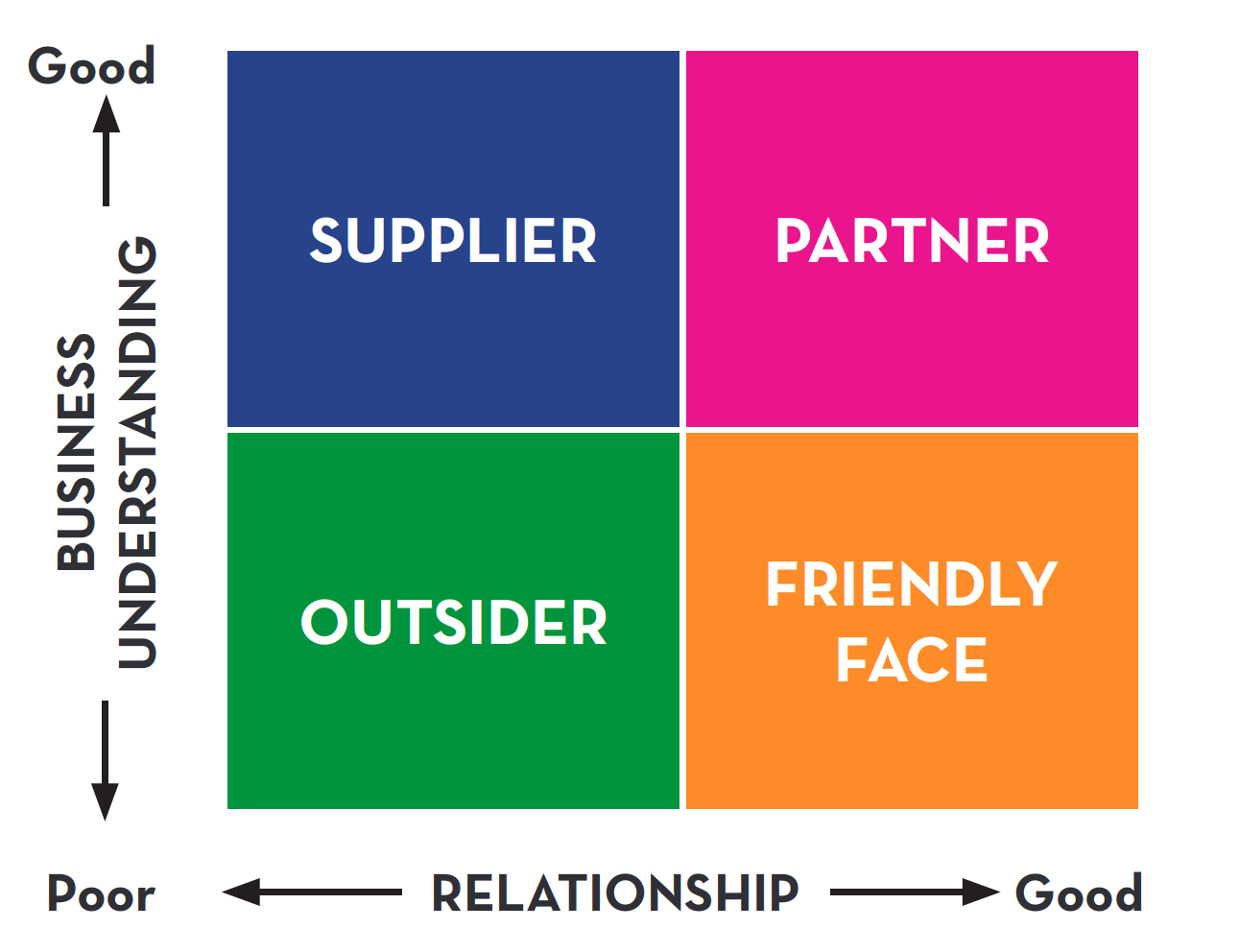02.
The Informer
By the eighties, things had progressed a little. Salesmen, now called “Representatives” and “Sales Executives” had evolved and developed good projection and presentation skills to explain the features, advantages and benefits of their products and services.
Clearly the main function of the eighties Sales Executive was to inform – in fact many were regarded as “walking technical handbooks.” Sadly, Sales Executives’ ears did not develop and evolve as well as their tongues. They did not listen, they simply “waited to speak” whilst taking a breath in between sentences. If customers “interrupted” they were swiftly dealt with using a range of questionable, heavy-handed techniques, tricks and gimmicks inspired by books like “How to develop a killer instinct”, “How to get the customer to say yes” and “55 different ways to overcome objections!”
The planning skill of The Informer was poor. He believed that he could “play it by ear” and that customers needed to be “told”. However, customers did not share this view; often resisted and, later in the day, badly mauled Sales Executives would gather at local watering holes to lick their wounds.The eighties created dozens of white-suited management gurus. Often sponsored by leading politicians, who had recognised the value of being seen with these new superstars, the gurus filled conference halls and arenas and “enter-trained” Sales Executives and their managers with their misguided and aggressive “Close-that-sale!” philosophies.
Their language was often combative. Sales Executives were told that customer objections were “unjustified” and needed to be “overcome” by following a number of fool-proof steps. They dismissed the possibility that objections might actually be genuine customer concerns that needed to be understood and handled and resolved sensitively.
Customers did not like The Informer’s projection approach. “Selling” became a dirty word conjuring up //images of aggression, manipulation and deceit. Not surprisingly, customers saw themselves as adversaries and “dug in” to defend themselves against verbal attacks. The Informer, however, carried on talking… to an audience of one and a market of none!


